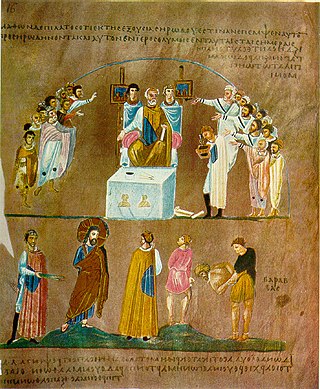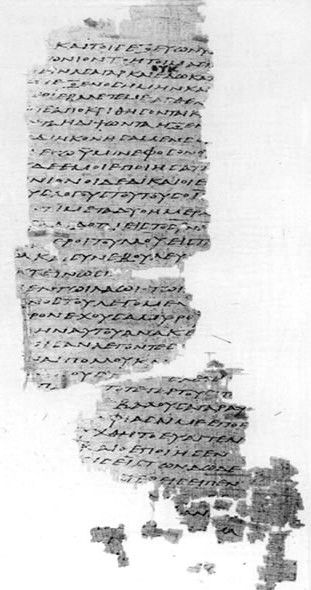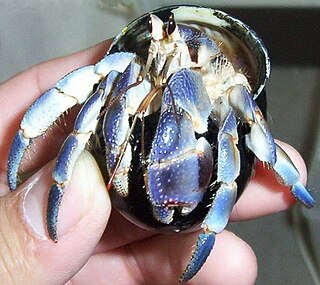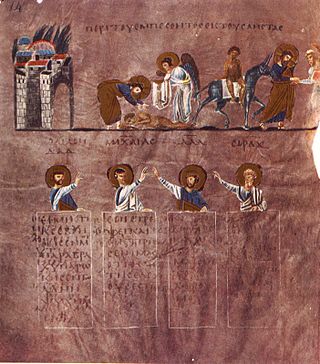
The Rossano Gospels, designated by 042 or Σ, ε 18 (Soden), held at the cathedral of Rossano in Italy, is a 6th-century illuminated manuscript Gospel Book written following the reconquest of the Italian peninsula by the Byzantine Empire. Also known as Codex purpureus Rossanensis due to the reddish-purple appearance of its pages, the codex is one of the oldest surviving illuminated manuscripts of the New Testament. The manuscript is famous for its prefatory cycle of miniatures of subjects from the Life of Christ, arranged in two tiers on the page, sometimes with small Old Testament prophet portraits below, prefiguring and pointing up to events described in the New Testament scene above.

The purple finch is a bird in the finch family, Fringillidae. It breeds in the northern United States, southern Canada, and the west coast of North America.

The green wood hoopoe is a large, up to 44 cm (17 in) long tropical bird native to Africa. It is a member of the family Phoeniculidae, the wood hoopoes, and was formerly known as the red-billed wood hoopoe.

The purple starling, estorninho azul(argentina, peru, colombia), melro metálico (brazil) also known as the purple glossy starling, is a member of the starling family of birds.

Lablab purpureus is a species of bean in the family Fabaceae. It is native to sub-Saharan Africa and India and it is cultivated throughout the tropics for food. English language common names include hyacinth bean, lablab-beanbonavist bean/pea, dolichos bean, seim or sem bean, lablab bean, Egyptian kidney bean, Indian bean, bataw and Australian pea. Lablab is a monotypic genus.

Matthew 25, the twenty-fifth chapter of the Gospel of Matthew, continues the Olivet Discourse or "Little Apocalypse" spoken by Jesus Christ, also described as the Eschatological Discourse, which had started in chapter 24.

Matthew 15 is the fifteenth chapter in the Gospel of Matthew in the New Testament section of the Christian Bible. It concludes the narrative about Jesus' ministry in Galilee and can be divided into the following subsections:

Monascus purpureus is a species of mold that is purplish-red in color. It is also known by the names ang-khak rice mold, corn silage mold, maize silage mold, and rice kernel discoloration.

Coenobita purpureus, known generally as the Okinawan blueberry hermit crab or blueberry hermit crab, is a species of land hermit crab in the family Coenobitidae. They are typically a blue/purple color with white eyestalks, a red antennae, and a brown antennae. They also have gastropod shells.

Iridomyrmex is a genus of ants called rainbow ants first described by Austrian entomologist Gustav Mayr in 1862. He placed the genus in the subfamily Dolichoderinae of the family Formicidae. It has 79 described species and five fossil species. Most of these ants are native to Australia; others are found in Asia and Oceania, and they have been introduced to Brazil, New Zealand, and the United Arab Emirates. Fossil species are known from China, France, and the United States.

The meat ant, also known as the gravel ant or southern meat ant, is a species of ant endemic to Australia. A member of the genus Iridomyrmex in the subfamily Dolichoderinae, it was described by British entomologist Frederick Smith in 1858. The meat ant is associated with many common names due to its appearance, nest-building behaviour and abundance, of which its specific name, purpureus, refers to its coloured appearance. It is among the best-known species of ant found throughout Australia; it occurs in almost all states and territories except for Tasmania. Its enormous distribution, aggression and ecological importance have made this ant a dominant species.

Purple parchment or purple vellum refers to parchment dyed purple; codex purpureus refers to manuscripts written entirely or mostly on such parchment. The lettering may be in gold or silver. Later the practice was revived for some especially grand illuminated manuscripts produced for the emperors in Carolingian art and Ottonian art, in Anglo-Saxon England and elsewhere. Some just use purple parchment for sections of the work; the 8th-century Anglo-Saxon Stockholm Codex Aureus alternates dyed and un-dyed pages.

Codex Purpureus Beratinus designated by Φ or 043, ε 17, is an uncial illuminated manuscript Gospel book written in Greek. Dated palaeographically to the 6th-century, the manuscript is written in an uncial hand on purple vellum with silver ink. The codex is preserved at the Albanian National Archives in Tirana, Albania. It was formerly possessed by the St. George Church in the town of Berat, Albania, hence the 'Beratinus' appellation.

Ceanothus purpureus, with the common name Napa ceanothus and hollyleaf ceanothus, is a species of shrub in the family Rhamnaceae. It is endemic to northern California, where it is known only from the Inner North Coast Ranges north of the Bay Area, mainly in Sonoma and Napa Counties. The largest remaining population of this shrub occurs on Mt. George near Napa, where it is protected in a botanical preserve.

Cistus × purpureus, commonly known as orchid rockrose, is one of the most commonly cultivated varieties of rockrose.

Lotus purpureus, known as asparagus-pea or winged pea, is an annual leguminous herb native to the countries around the Mediterranean, although introduced elsewhere. It is low growing, and produces a profusion of prominent deep red flowers, followed by seed pods that are longitudinally winged.

Spatangus purpureus, commonly known as the purple heart urchin, is a species of sea urchin in the family Spatangidae. It is found in the eastern Atlantic Ocean and the Mediterranean Sea, where it lives immersed in the sediment.

Lutjanus purpureus, the southern red snapper or Caribbean red snapper, is a species of marine ray-finned fish, a snapper belonging to the family Lutjanidae. It is native to the western Atlantic Ocean as well the Caribbean Sea.

Anostirus is a genus of beetles in the family Elateridae.

Chamaecytisus purpureus, the purple broom, is a species of flowering plant in the family Fabaceae. It is native to the southern and southeastern Alps and the Dinaric Alps down to northern Albania, and it has been introduced to various locales in Europe and the Caucasus. It is available from commercial suppliers.


















